Gregory Rutecki
Ohio, United States
“The Nazi terror intensified…Poland became the home of humanity’s Holocaust, an archipelago of death-factories…executions…and exterminations which surpassed anything…in…history.”1 Davies
“Germany…killed the prey (Poland)…Russia will seize that part of the carcass…Germany cannot use. It will play the…role of hyena to the German lion.”2
“I…order to kill without mercy men, women and children of the Polish race….Who…speaks today of the annihilation of the Armenians?”3 (Hitler)
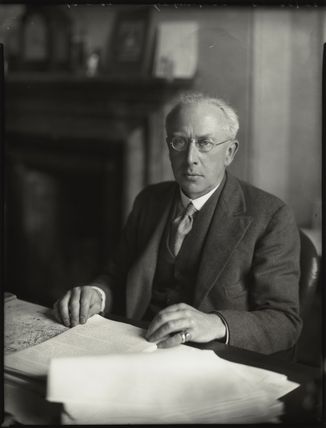 |
| (Figure 1) Sir Owen O’Malley |
At 4:40 a.m. September 1, 1939, German battleship Schleswig-Holstein—on a “friendship visit” to Danzig, Poland—opened fire. World War II had begun.1 Unlike Poland, the Germans had eager allies. The protocol of August 23 led to a “division of the spoils” between Nazi Germany and Soviet Russia.1 Polish Marshal Smigly-Rydz once said, “With the Germans we risk losing our freedom. With the Russians…our souls.”2
After the war, the population of Poland would be reduced by 6,028,000 (2.9 million Jews).1 On the West where Nazi Germany conquered, Auschwitz-Birkenau consumed four million human beings.1 In Stalin’s east, of 1.5 million Poles deported to gulags, one-half died.1
The final irony, the cataclysm began in response to Poland’s invasion by Germany and Soviet Russia—but when hostilities ended—Poland was subjugated by Stalin. When Polish troops arrived in England in June 1940, British War Secretary Eden declared, “We shall not abandon your sacred cause and shall continue this war until your beloved country be returned to her faithful sons.”4 That promise was broken. Injustices evolved after the Katyn Forest massacre ordered by Stalin. The Kosciuszko Squadron—comprised of Polish pilots who knew the perfidy of Katyn—shed blood to defend England. Roosevelt would join Churchill in denial of Stalin’s crimes. The betrayal of Poland is a dark chapter in history as well as a question of three nations’ honor.4
Katyn Massacre: A Crime against Humanity
“The order…was written (by) rulers who were sure they would…be shielded from the judgment of history. The…1940 document decreed the “supreme punishment…of 14,736 Polish…Officers…The bodies of more than 4,000 were discovered…in the Katyn forest…it was not until 1990 that Soviet officials…produced…evidence of Soviet responsibility.”5
“(They were) forced to their knees near the edge of pits…Younger men resisted and were stabbed with bayonets…[a] macabre death [was reserved] for those most difficult…Their mouths were stuffed with sawdust and gagged; their over coats were then yanked above their heads and fastened with choke knots…a cord connected their raised hands to the choke knot…if they struggled they strangled themselves to death.2
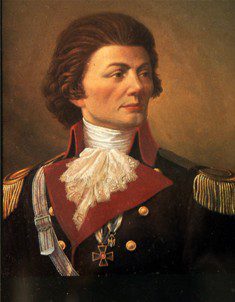 |
| (Figure 2) Tadeusz Kosciuszko |
On March 29, 1940, the ground in German-occupied Katyn Forest, near Smolensk, had thawed.2 A dig was set in motion after a wolf had unearthed human bones. Eleven mass graves were discovered. One grave was thirty-one yards long, eighteen yards wide and eleven feet deep. It may have held 3000 bodies.2 Papers on the bodies identified them as Polish. It was determined the area had not been held by the German Army when the executions transpired. The Katyn Forest had been in Soviet Russia’s possession. The majority of victims were shot in the head from behind, the bullet entering “the occipital bone, coursing upward …this angle suggests that each victim’s head was bent forward…a shot thus aimed offered… instant death and minimal loss of blood [a] Bolshevik technique developed in the early days of the revolution.2Although the Soviets denied the crime, they ultimately admitted guilt.4 Churchill and Roosevelt were aware of Stalin’s role in the massacre, but chose to suppress the truth.4
If there was a hero, it was Sir Owen O’Malley (Figure 1), British Ambassador to the Polish Government in exile who “…reconstructed the story of the…executions [in an] accurate manner…sent to George VI, Churchill, and the War Cabinet in June 1943. [It was a] confirmation of Soviet guilt.”4 Churchill did not release the report. Other historians concurred saying O’Malley, “demolished the Soviet case for regarding the Katyn massacres as a Nazi crime.”6 O’Malley responded. “We have…distorted [our] moral judgments. [We] used the good name of England to cover up a massacre.”4American allies acted similarly. Roosevelt observed, the “‘graves’ question wasn’t worth such a fuss…what fools the (London Poles) are”!4He spoke to Stalin, (I) “fully understood [your] problem.”4 Roosevelt told a colleague the Russians were probably guilty.4After investigation verified his suspicion, he buried it.4 Life Magazine wrote, “Remember that no vital U.S. interest is involved in the Russo-Polish dispute…since our major interest lies with Russia, our diplomats ought not to get too huffy in backing up the Poles.”4
The Kosciuszko Squadron: A Question of Honor
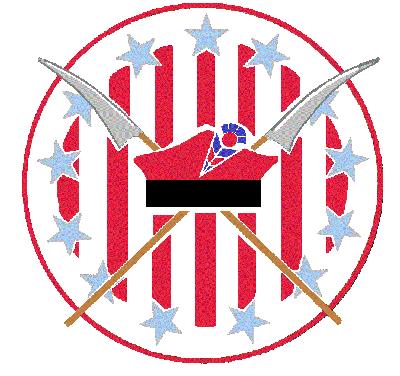 |
| (Figure 3) The emblem of the Kosciuszko Squadron |
Included among Poles who escaped 1939 Poland were men-at-arms of the Polish Military. Despite conditions in Poland—and their knowledge of the Katyn massacre—they confronted the enemy. On May 18, 1944 Polish General Anders’ 2nd Corps hoisted Poland’s flag over Monte Casino, incurring 3,784 casualties defeating the Germans.4 But there was also a select group of Polish fliers who contributed to the war effort. They risked lives for England, a nation that would be responsible for their servitude under Soviet Russia.
The Squadron was named after Polish Patriot and Revolutionary War hero, Tadeusz Kosciuszko (Figure 2). According to Horatio Gates, his engineering helped win the Battle of Saratoga.4 Washington extolled him for defenses constructed at West Point.4 To gain insight into Kosciuszko as a person, his last will and testament requested his U.S. property be sold and the proceeds used to free as many of Jefferson’s slaves as possible.4
The insignia of the Squadron was a stylized version of the American flag.4 (Figure 3) Their pilots’ exploits were legendary. “On the 1st day of the London blitz…the Squadron was credited with shooting down fourteen German aircraft, a Royal Air Force record. In their first eight days of combat they destroyed nearly forty enemy planes.”4 By War’s end, this squadron shot down more German aircraft than any squad attached to the Royal Air Force.4 (Figure 4) America’s ace Francis Gabreski (thirty-one kills), a Polish-American, described them as the finest airmen in the world.4British Bombers favored the Squadron as escorts because, “When they go tearing into enemy bombers and fighters they get so close you would think they were going to collide [then they] unleash devastating broadsides which will cut chunks out of… a German (airplane).”4 (Figure 5)
World War II finally ended. In June, 1946, Britain invited thirty victorious Allied Nations to celebrate in a victory parade. Poles that fought for England were banned in deference to Stalin.3 Members of Parliament wrote, “the Poles will not be there. Have we lost not only our sense of perspective, but our sense of gratitude as well?4
Jeszcze Polska nie zginela (Poland has not disappeared)
“Atop (Monte Casino), the sound of a bugle [air] playing the Krakow Hejnal . . . celebrating a Thirteenth Century trumpet . . . whose throat had been pierced by an arrow as he summoned…citizens to battle against the Tatars…the Hejnal breaks off…in the middle of a note…At the sound of the trumpet [World War II Polish] infantry men wept like children…hearing the “Voice of Poland.”4
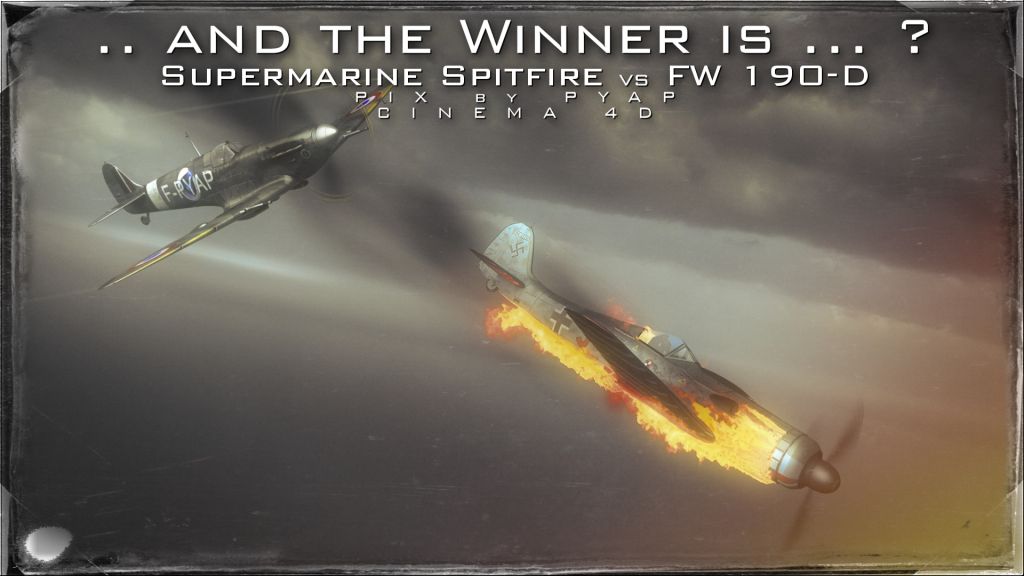 |
| (Figure 4) A Spitfire as flown by the Kosciuszko Squadron shooting down a German plane |
Sacrifices were de rigueur during World War II. Some of Poland’s contributions will be recounted. From one perspective, breaking the Enigma code was “one of the greatest contributions to eventual. Allied victory.”2 A device developed at the University of Poznan was instrumental in solving Enigma.2 One of the breakthroughs in the Manhattan Project was made by Stanislaw Ulam at Lwow.2 On an ethical level there were other deeds worth remembering.
Zegota was an underground organization in Poland that rescued Jews. Members included physicians.6 Marek Edelman, a physician in Zegota saved many lives, and it was said by Zegota operatives—that as Poles—”[members] had a…sense of affinity with…the slaughtered races…with devastated cultures.6 Dr. Julian Nie was tortured and killed by the Nazis for his clandestine medical services to Jews.6 The Cracow Pharmacy, in the Jewish ghetto, run by Polish gentiles, protected Torah scrolls.7 The Pharmacy provided medical supplies to Jewish inhabitants at no cost.7 Yad Vashem, the Holocaust Martyrs and Heroes Remembrance Authority—from Isaiah 56:5: “And to them I will give in my house and within my walls a Memorial and a Name” (a Yad Vashem)—recognized 6,000 Polish gentiles from a total of 22,000 rescuers as “Righteous among the Nations of the World” (hasidei u’mot ha’olam) for rescuing Jews.8,9,10
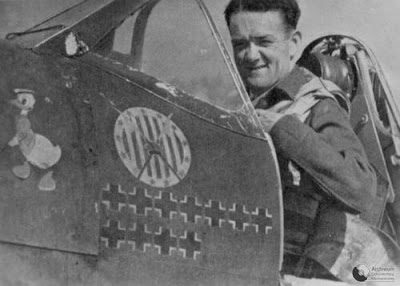 |
| (Figure 5) A Kosciuszko Squadron pilot with the squadron’s emblem on his plane with his record of 11 German planes shot down |
The problem can also be framed in the context of Nuremberg. Zbigniew Brzezinski observed, “Hitler’s crimes are still being justly punished. But in the Soviet Union there are literally thousands of ex-killers . . . living on official pensions [several] participants in the mass murder…in Katyn…have been identified…why has not a single one…been put on trial”?2 Similar omissions occurred after the Armenian Genocide of WWI (note Hitler’s comment on the first page) and with the Japanese who performed human experimentation in World War II.11, 12
Roosevelt and Churchill’s priority was to hold three Allies together. That goal would have disastrous effects. Stalin’s intentions resurfaced later during the Warsaw Uprising.13 The Russian leader refused all attempts by his Allies to intervene against the Germans. A genocide that began with the invasion of Poland, the deportations to gulags, and Katyn continued. Churchill and Roosevelt again demurred. An insightful quote explains, “Stalin personally signed the order to execute the Polish officers, he knew…what he was doing…he was testing the…Grand Alliance to see how far he could go [if] he could push the British and Americans to connive in a monstrous falsehood about…murder…he could [push] them . . . on many less sensitive matters.”
Churchill once said, “There is one helpful guide…for a nation to keep its word and…act in accordance with its treaty obligations to allies. This guide is called Honor.”4 Poland’s fate as determined by Stalin, Churchill, and Roosevelt was thus most dishonorable.5
References
- Davies, Norman. God’s Playground: A History of Poland from 1795 to the Present (Volume 2). Columbia University Press, N.Y. 1982. p. 454, 435, 438, 463, 458.
- Paul, Allen. Katyn: The Untold Story of Stalin’s Polish Massacre. Charles Scribner’s Sons, N.Y. 1991. P. 34, 1, 110, 204-5, 111, 36, 99, 340
- Davies N. and Moorhouse R. Microcosm: Portrait of a Central European City. Jonathan Cape, London, 2002, p.380.
- Olson, Lynne & Cloud, Stanley. A Question of Honor: The Kosciuszko Squadron Forgotten Heroes of World War II.Alfred A. Knopf, N.Y., 2003. P.6, 268-9, 270, 271, 311-13, 19, 22, 4-5, 238-239, 145, 5, 313
- Nagorski, Andrew. At Last, a Victory for Truth: Moscow admits to an infamous massacre. Newsweek 1992; October 26th, 41.
- Tomaszewski I. & Werbowski T. Code Name Zegota: Rescuing Jews in Occupied Poland, 1942-1945. Praeger, Oxford, England.2010. p.19, 28, 50.
- Pankiewicz, T. The Cracow Ghetto Pharmacy. Holocaust Library, Washington, D.C. 1947 and 1987. P. 19, 44.
- Tammeus B. & Cukierkorn J. They Were Just People: Stories of Rescue in Poland During the Holocaust. University of Missouri Press, Columbia, Missouri, 2009. P 2.
- Fogelman E. Conscience and Courage: Rescuers of Jews during the Holocaust. Anchor Books, N.Y. 1994.
- Tec, N. Christian Rescue of Jews in Nazi-Occupied Poland: When Light Pierced the Darkness. Oxford University Press, Oxford. 1986. P36.
- Rutecki G.W. A revised timeline for biological agents: revisiting the early years of the germ theory of disease. Medical Hypotheses 2007; 68:222-226.
- Rutecki GW. From “never to harm” to harnessing plague: a Paradigm Shift in Plague Ethics in Handbook of Disease Outbreaks: Prevention, Detection, and Control, Nova Science Publishers, book chapter 2010. Series: Public Health in the 21st Century, ISBN: 978-1-60876-224-8.
- Davies, N. Rising ’44: The Battle for Warsaw. Viking, N.Y., 2003., p.52, 274-302, 393, 409, 48.
received his medical degree from the University of Illinois, Chicago in 1974. He completed Internal Medicine training at the Ohio State University Medical Center (1978) and his fellowship in Nephrology at the University of Minnesota (1980). After twelve years of private practice in general nephrology, he entered a teaching career at the Northeastern Ohio Universities College of Medicine, the Feinberg School of Medicine, Northwestern University, and the University of South Alabama in Mobile, Alabama. While at Northwestern, he was the E. Stephen Kurtides Chair of Medical Education. He now practices general internal medicine at the Cleveland Clinic.
Winter 2016 | Sections | War & Veterans

Leave a Reply